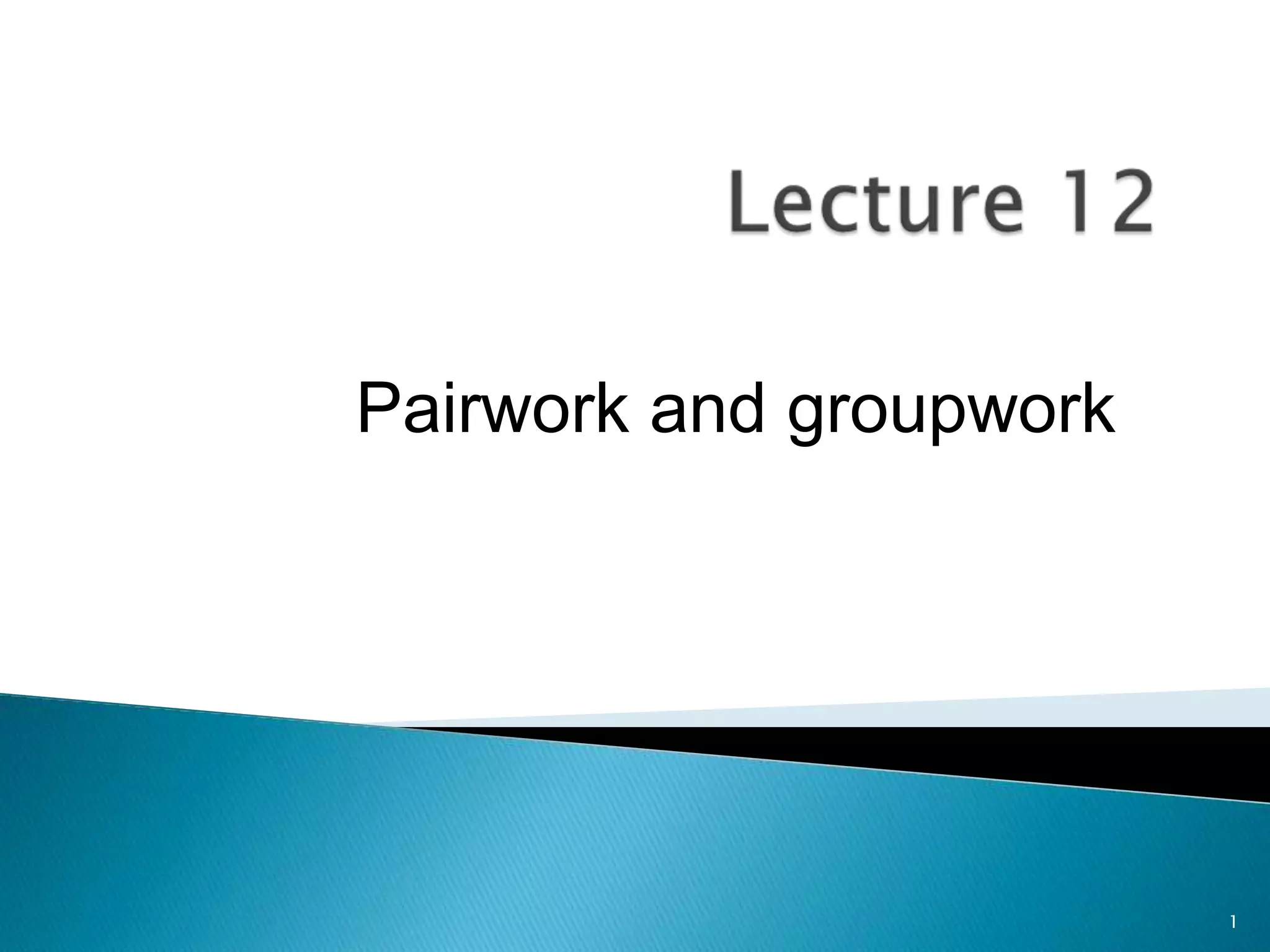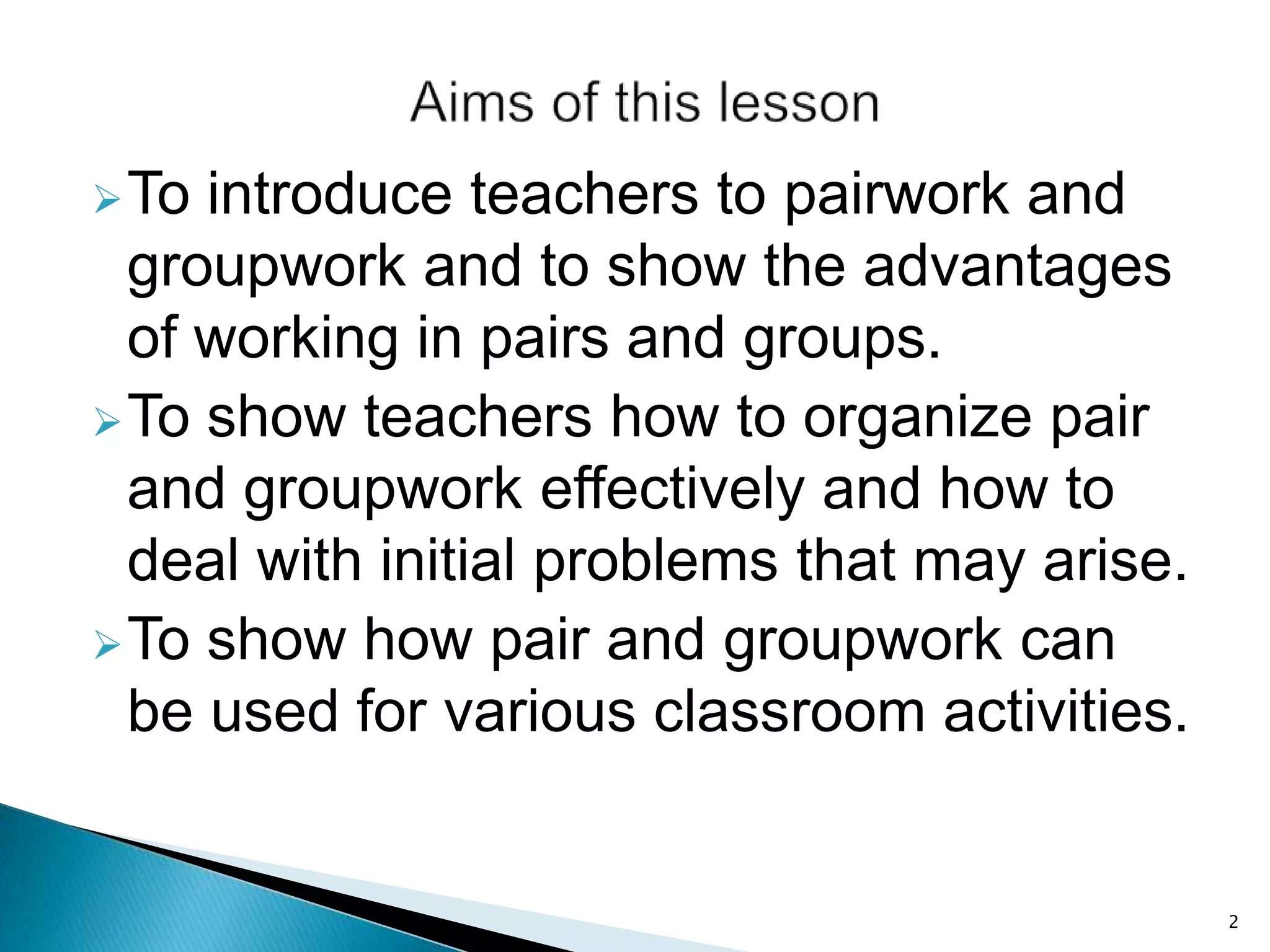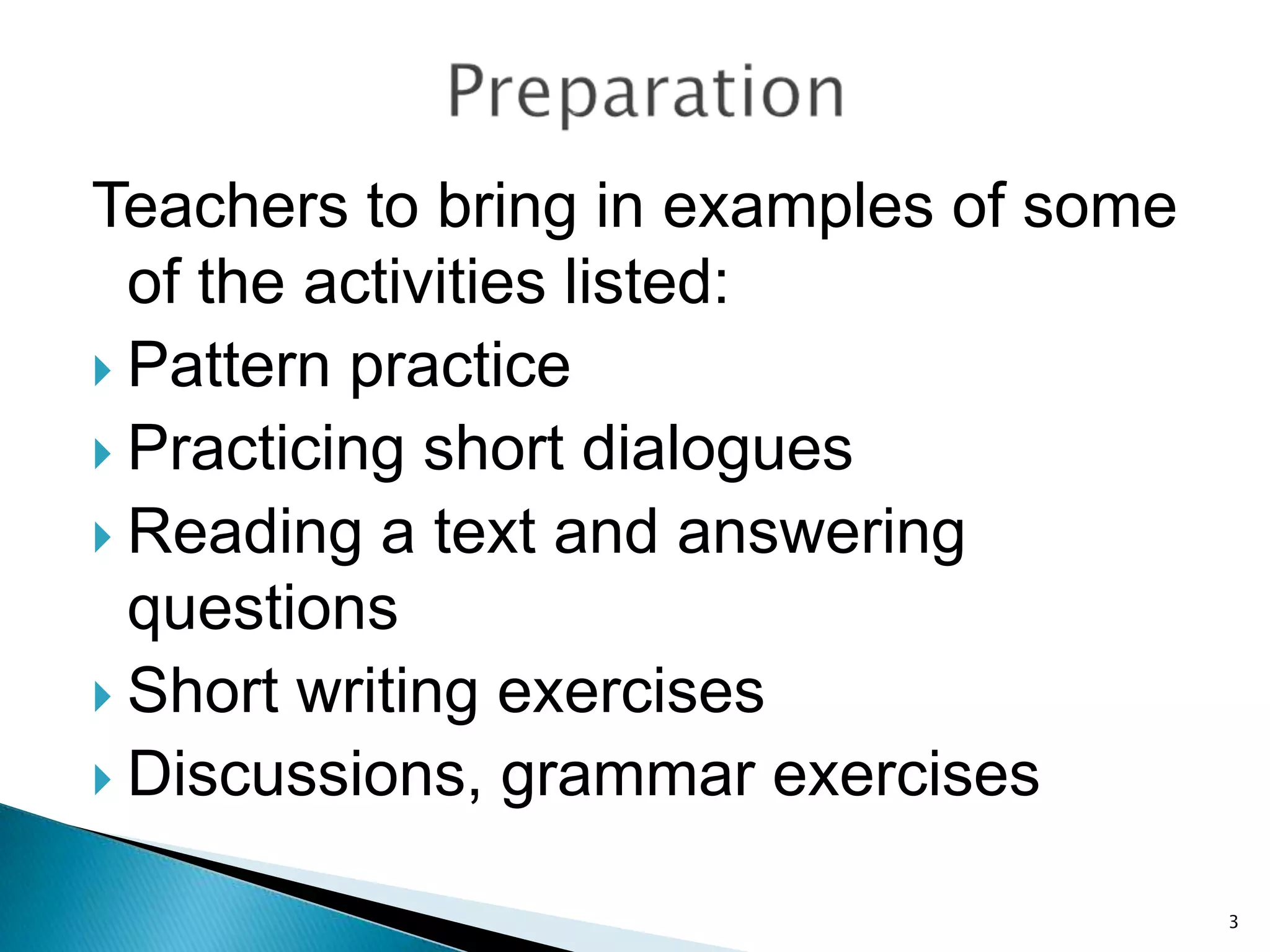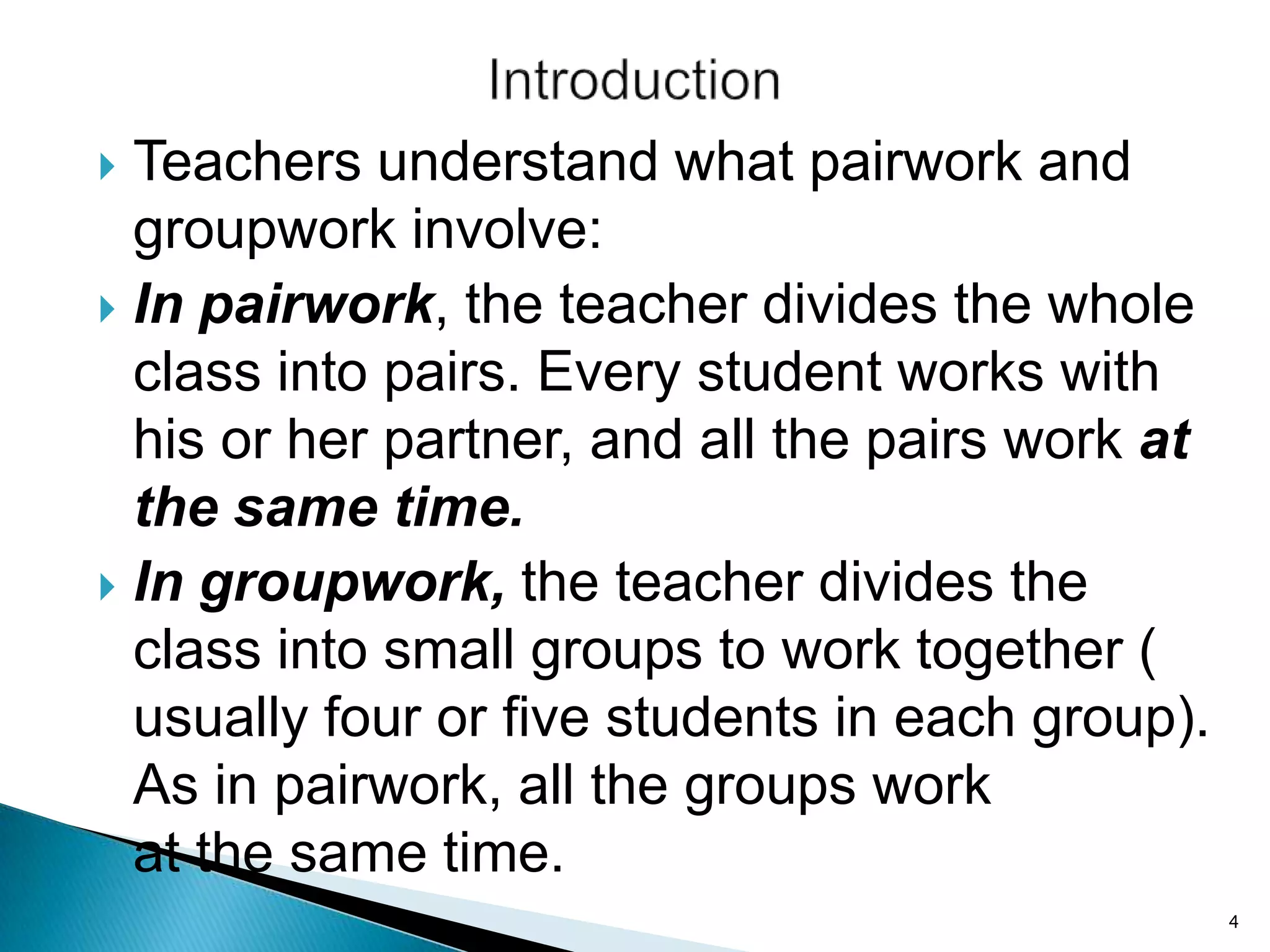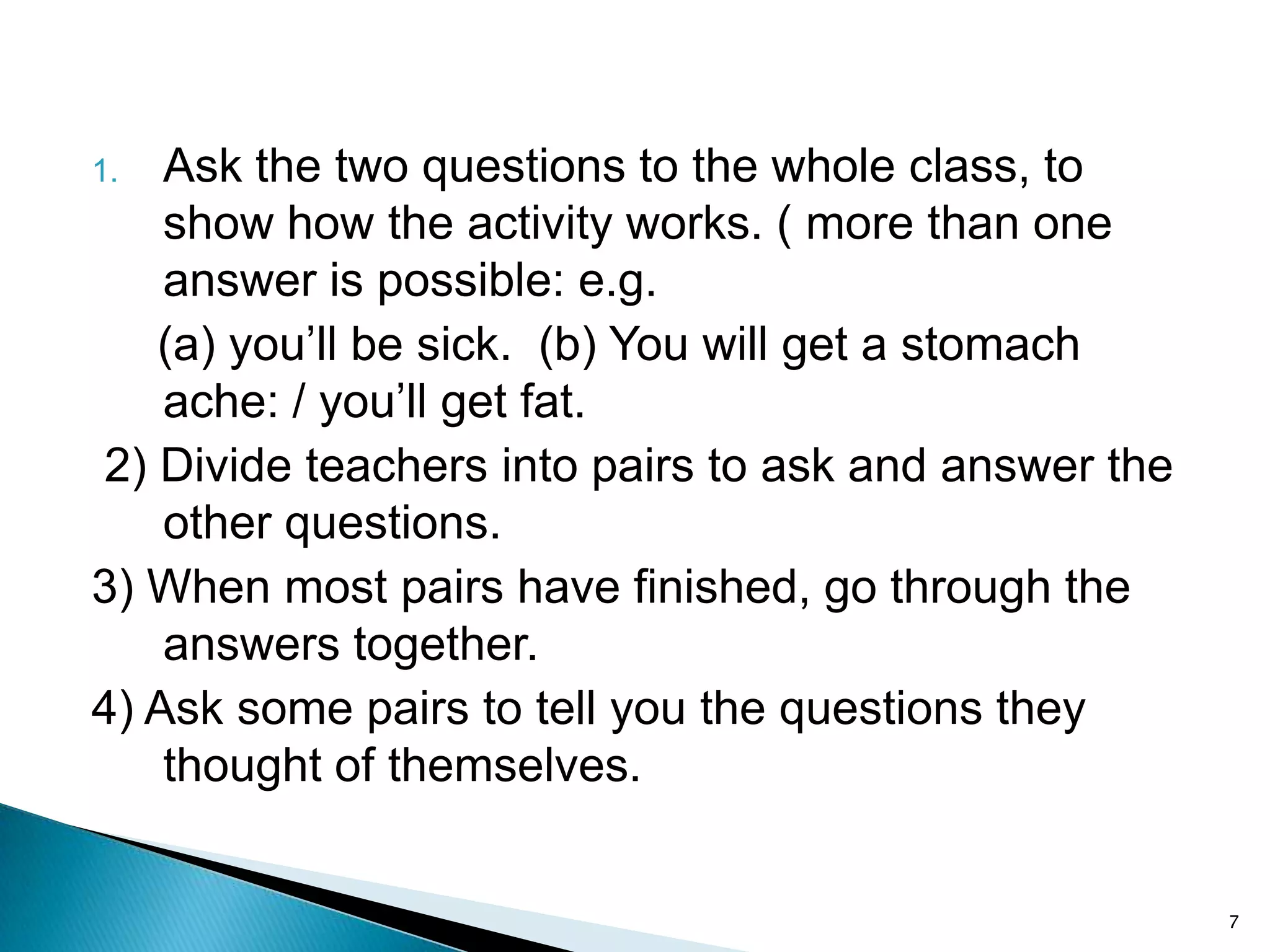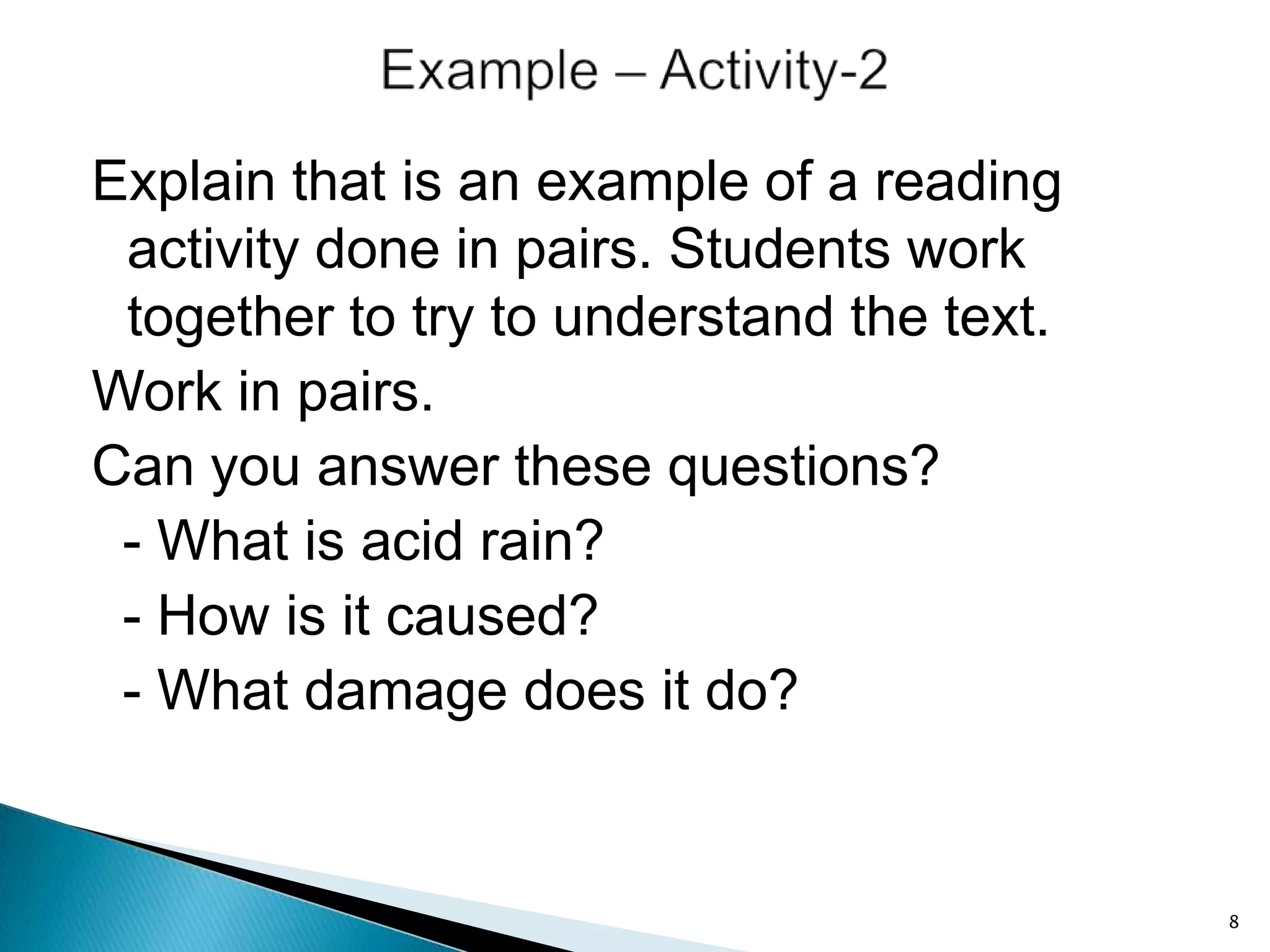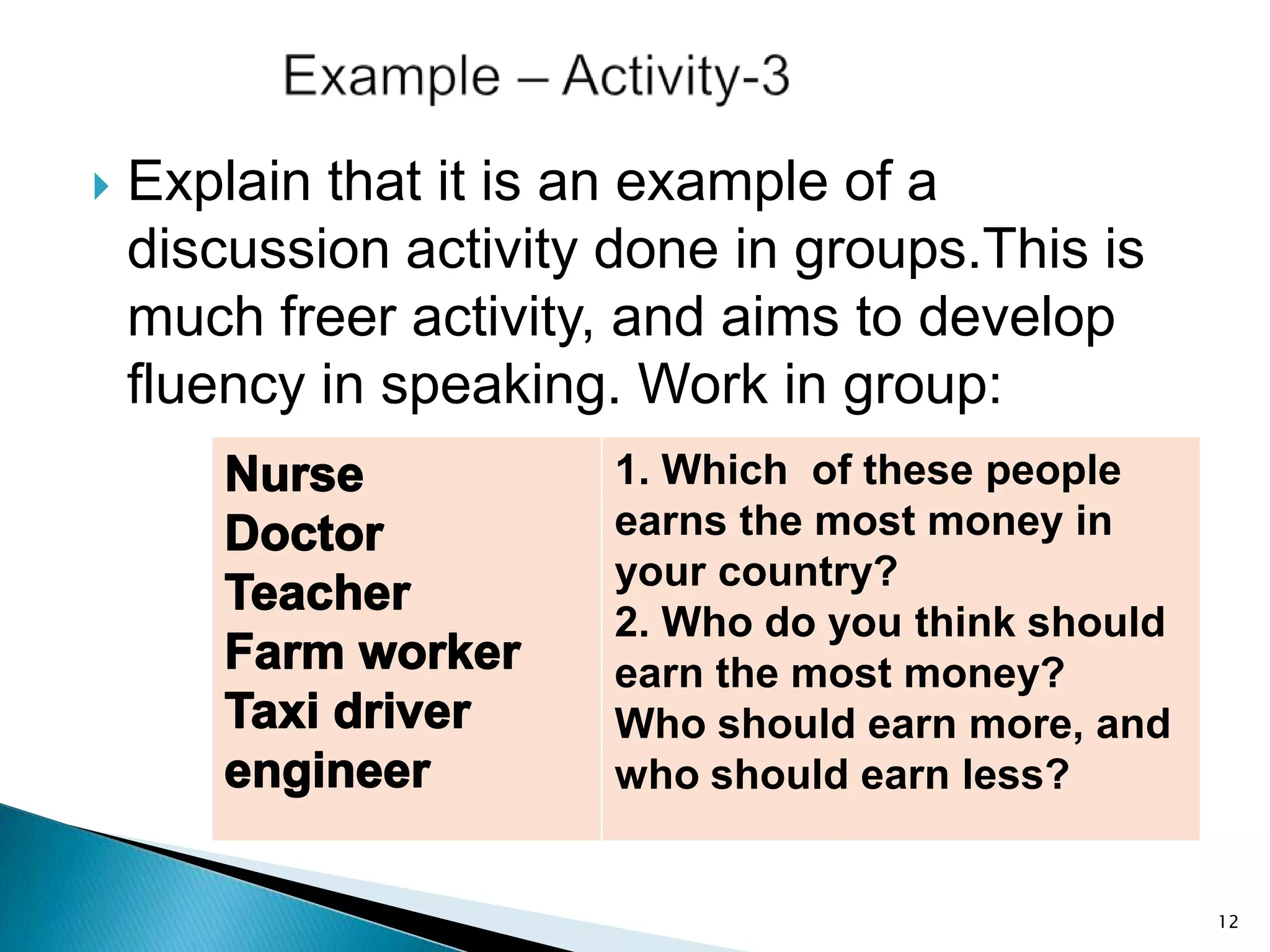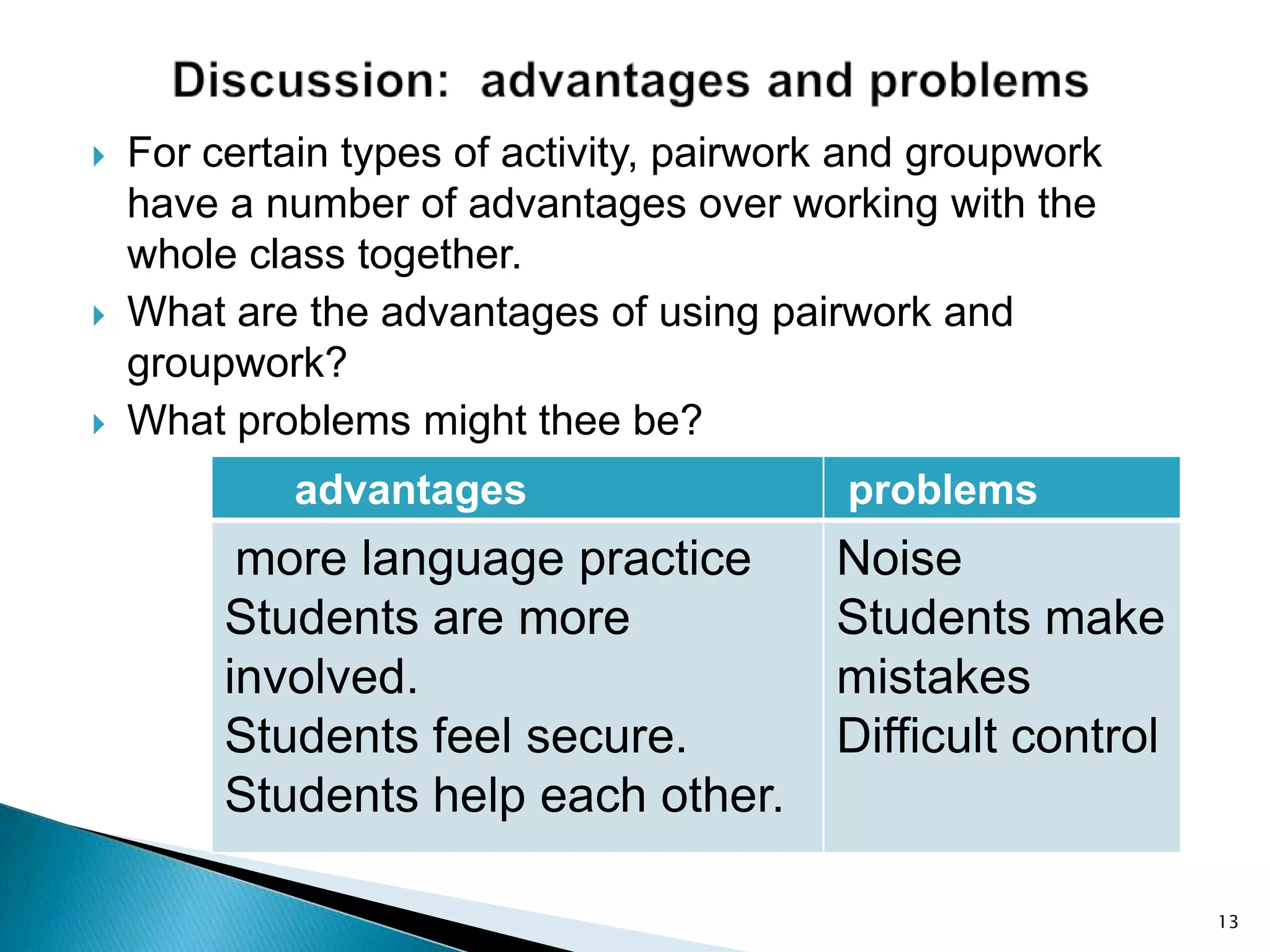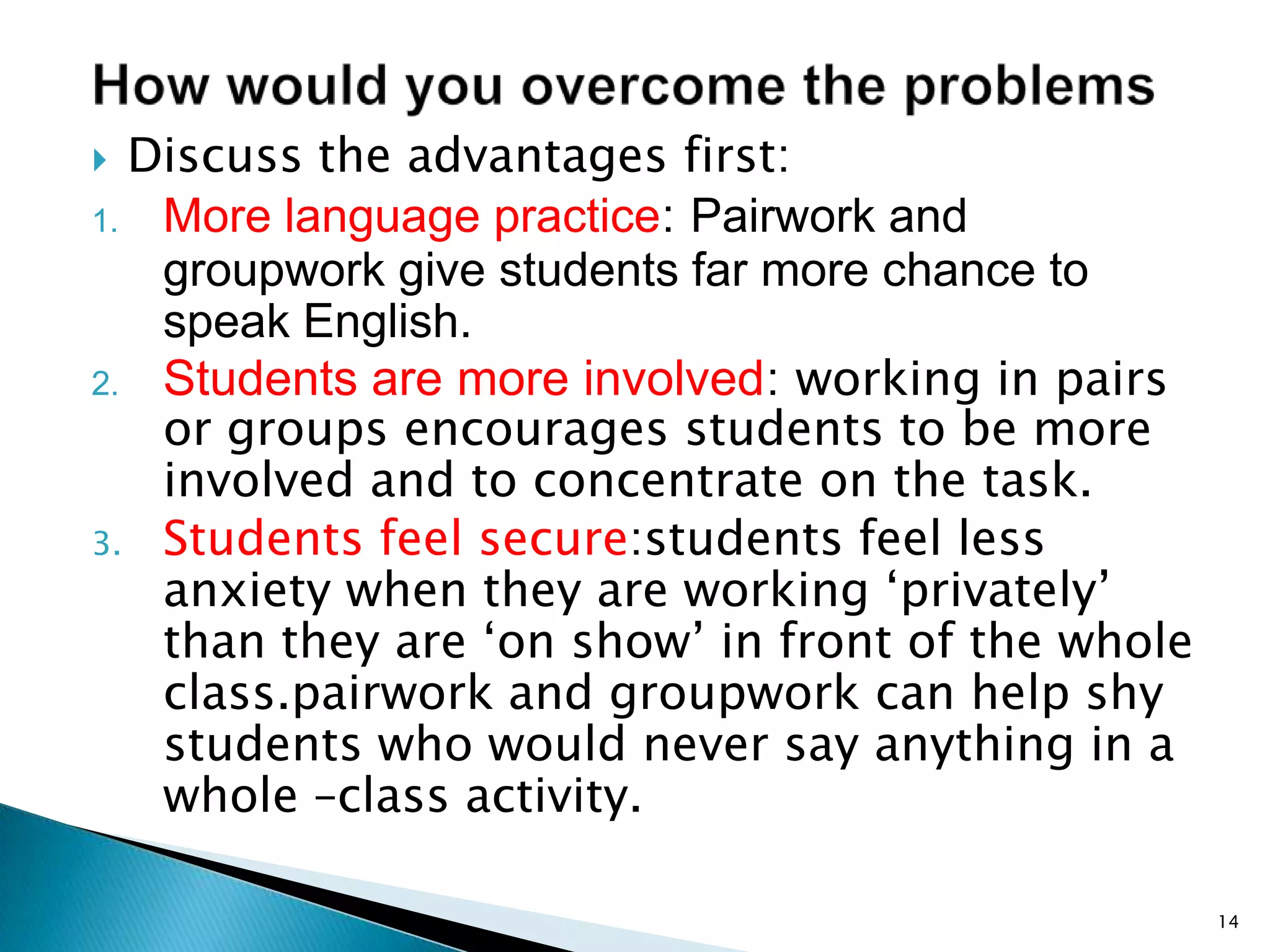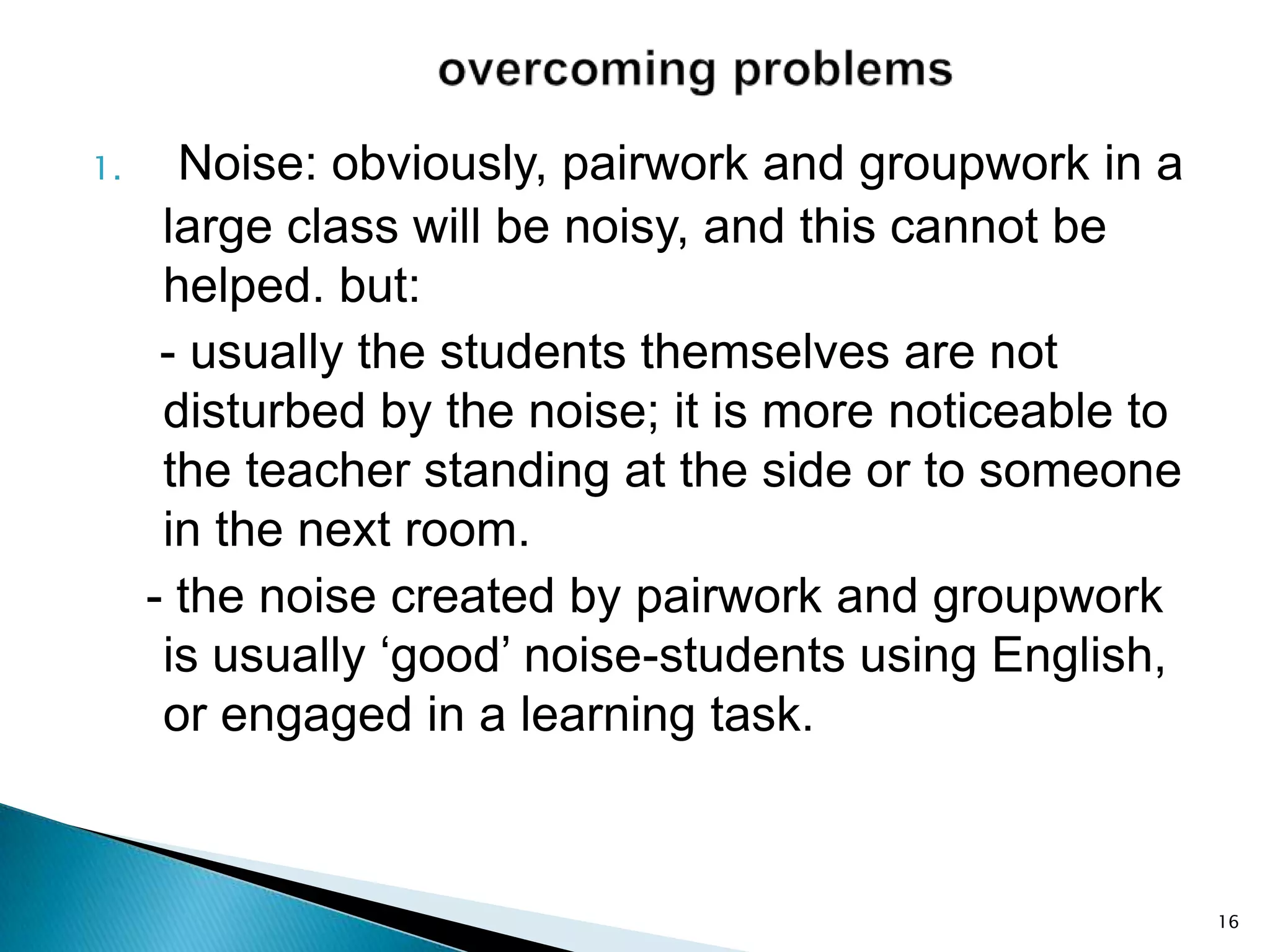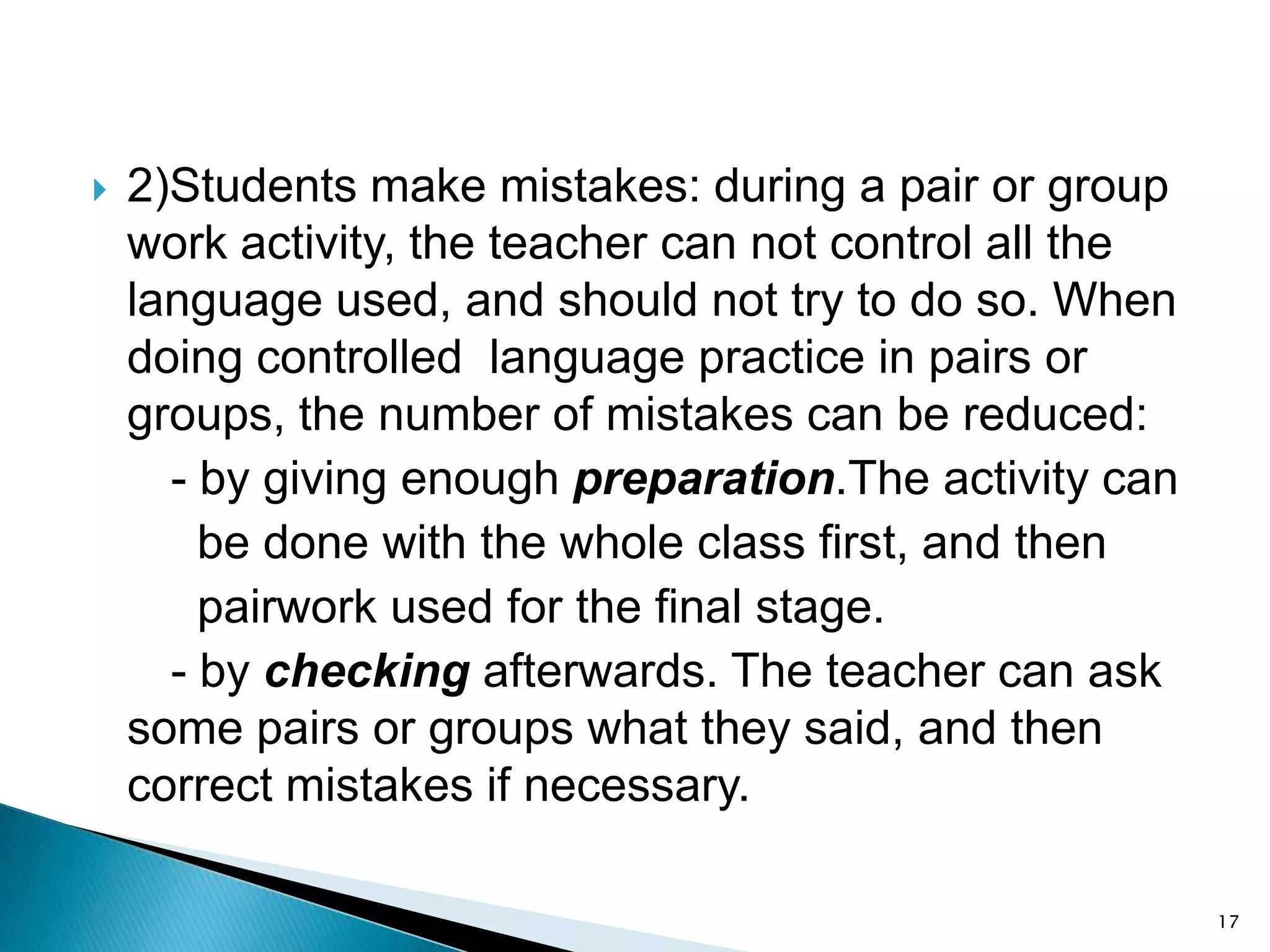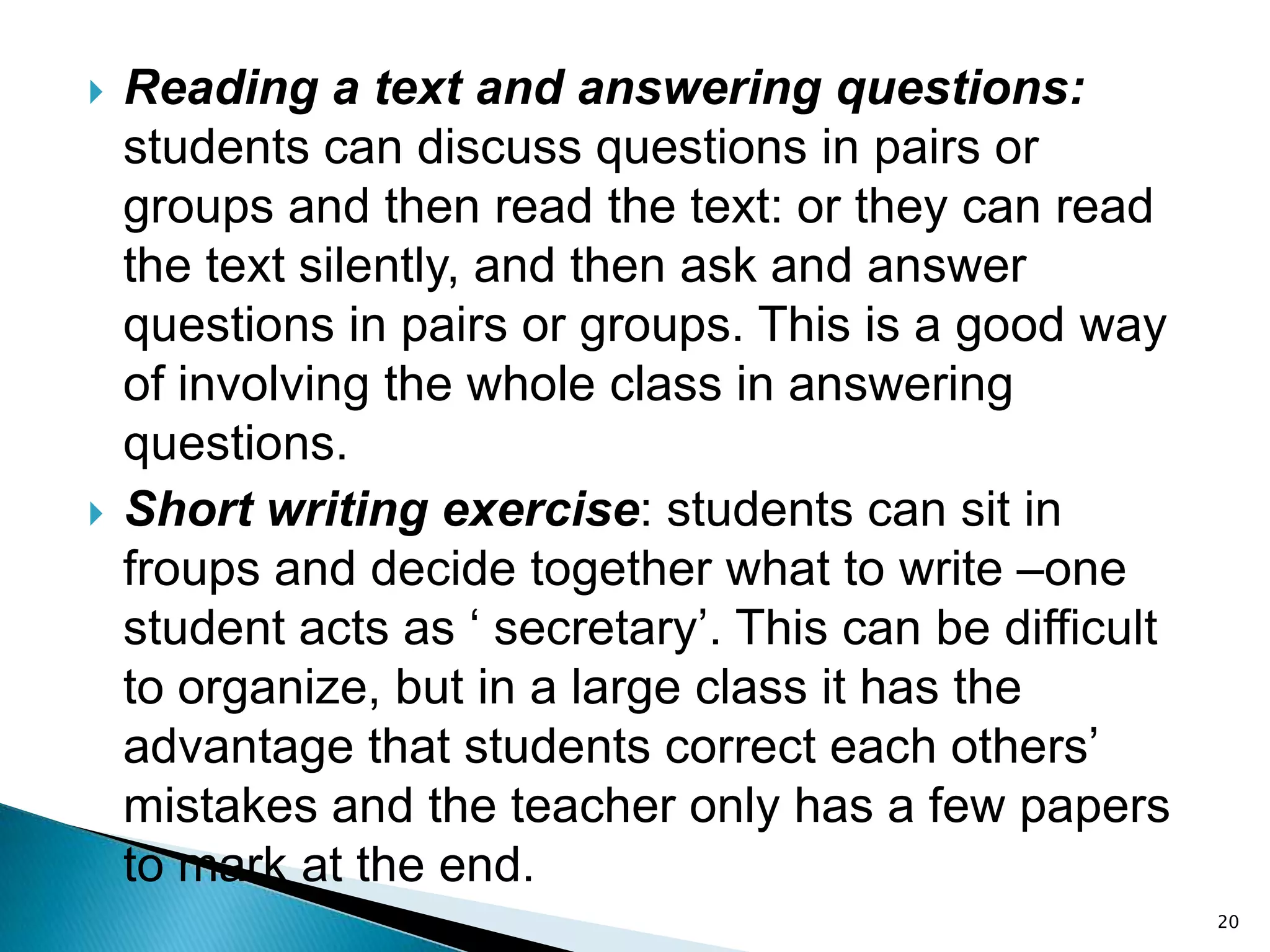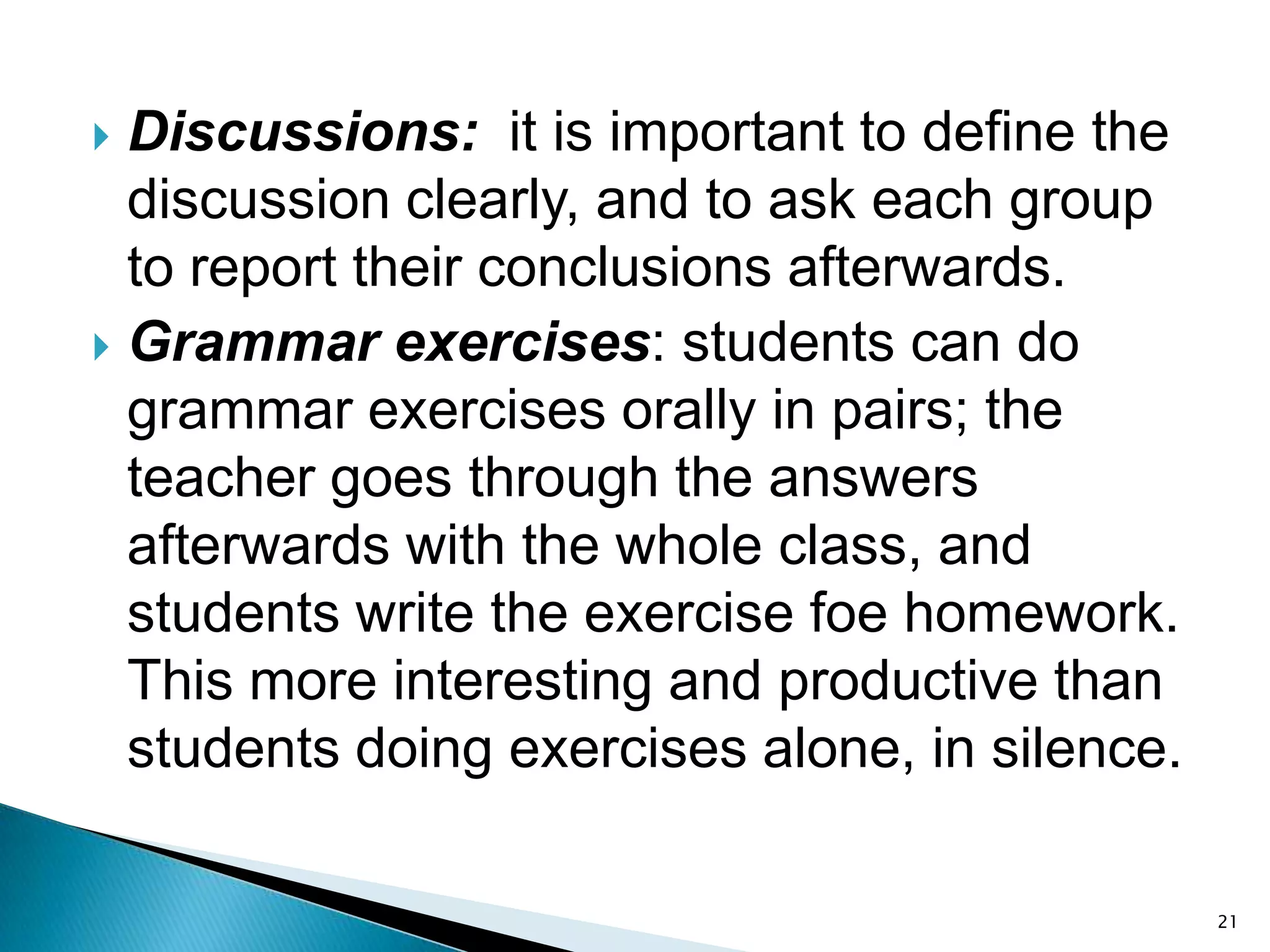This document discusses using pairwork and groupwork in the classroom. It introduces teachers to these techniques and shows how to organize and implement them effectively. Pairwork involves dividing the class into pairs to work on tasks simultaneously, while groupwork divides students into small groups. The document demonstrates examples of pairwork and groupwork activities, such as pattern practice, reading comprehension, and discussions. It addresses advantages like increased language practice and student involvement, as well as potential problems like noise and difficulty controlling the class. Suggestions are provided for implementing pairwork and groupwork successfully.
